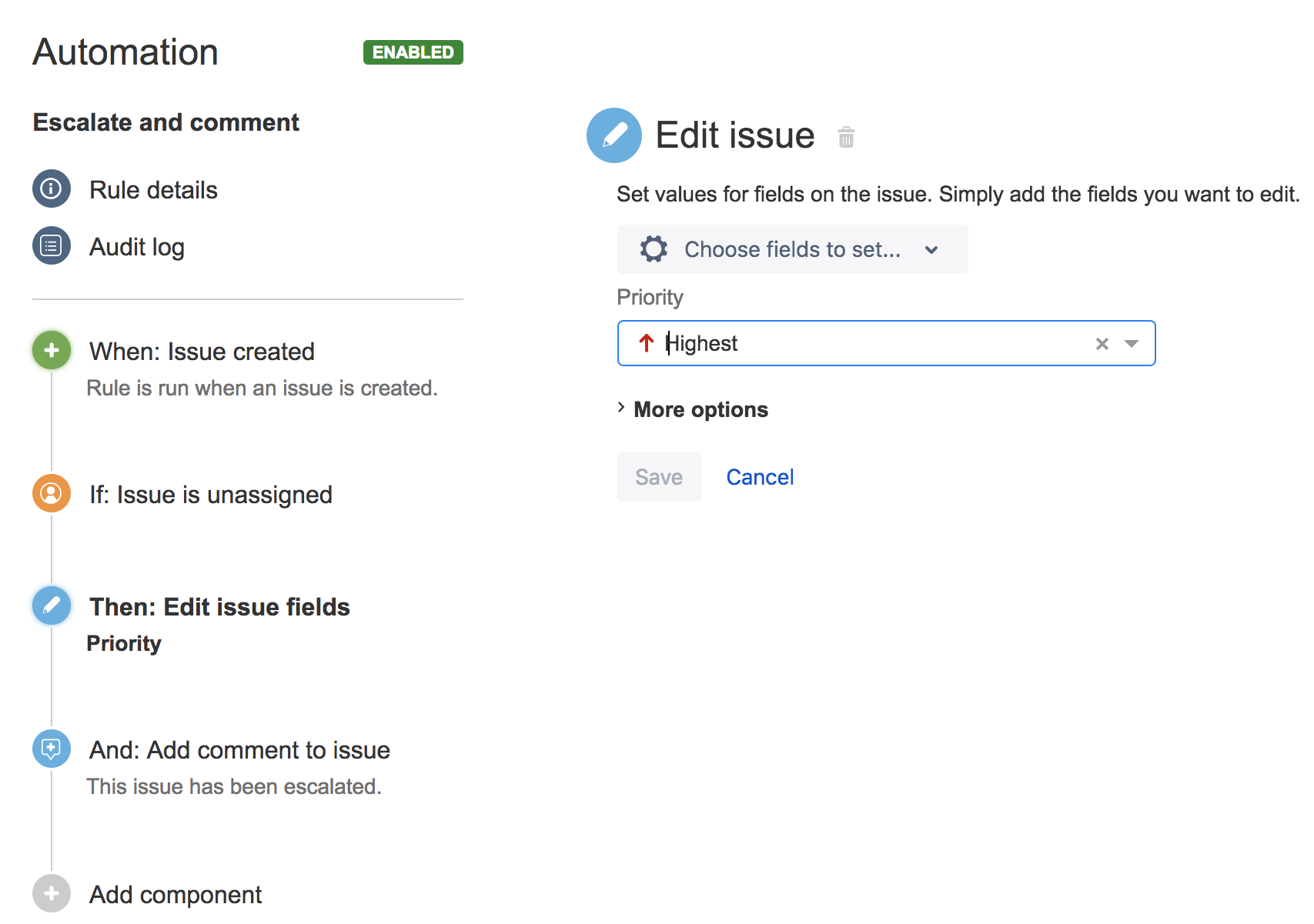Automation for Jira vs Jira Service Management automation
Platform Notice: Data Center Only - This article only applies to Atlassian products on the Data Center platform.
Note that this KB was created for the Data Center version of the product. Data Center KBs for non-Data-Center-specific features may also work for Server versions of the product, however they have not been tested. Support for Server* products ended on February 15th 2024. If you are running a Server product, you can visit the Atlassian Server end of support announcement to review your migration options.
*Except Fisheye and Crucible
Summary
We get asked quite often why we offer Automation for Jira when Jira Service Management (previously Jira Service Desk) comes with automation as a bundled feature. Jira Service Management's built-in automation is great, but Automation for Jira takes it to a new level in terms of power and ease of use. We believe Automation for Jira offers significant advantages over Jira Service Management's in-built automation that help ALL teams automate their processes and enable you to capture even more business requirements.
Solution
Highlights
Smart values - Smart values allow you to substitute in any value from any object that the rule has access to. E.g. The status of the parent issue, the email address of the person that edited the issue, or the before and after values of an issue edit. These are allowed in most fields enabling you to do things like:
Synchronize field values between issues
Perform math functions - e.g. days per week * Hours per day
Perform date manipulations - e.g. set due date to 4 business days from now
Only run a rule if a field matches a regex
This is only a small taste of what you can do with smart values.
More components - With over 50 components to choose from you capture many more processes than with the 32 components shipped with Jira Service Management.
Jira Software support - You can listen for changes to sprints, versions and also update software fields on issues. Enabling you to automate a lot of your release processes.
Working with related issues - You can also branch out and act on any related issue. E.g. For all sub-tasks, set their priority to the same as the parent issue, comment on all linked issues, transition the Epic of this story, and many more use cases
User interface
We take great pride in the UI and believe it be one of the slickest on the market. Here is a comparison of Automation for Jira vs Jira Service Management for a simple rule to edit the priority and add a comment:
Automation for Jira

Jira Service Management

Detailed feature comparison
| Automation for Jira | Jira Service Management automation |
Project types supported | All | Service projects |
Jira Software support | ✅ | ❌ |
Project Admins can create rules | ✅ | ✅ |
Permissions for who can create rules | ✅ | ❌ |
Service limits to protect Jira | ✅ | ❌ |
Global Rules | ✅ | ❌ |
Multi-Project Rules | ✅ | ❌ |
Customizable Rule Actor | ✅ Per rule | ✅ Per project |
Run rule as user who triggered event | ❌ | ✅ |
Triggers | ||
Conditions | ||
Actions | ||
Execute rules on related issues | ✅ | ❌ |
Scheduled Rules | ✅ | ❌ |
Copy values between issues and fields | ✅ | ❌ |
Math functions / calculated fields | ✅ | ❌ |
Comprehensive smart value substitutions | ✅ | ❌ 9 variables in emails |
Auto approve | ❌ | ✅ |
Audit logs | ✅ Rule/Project/Global | ✅ Rule |
Integrations out of the box | Stride, Slack, HipChat, Twilio, Webhooks | Webhooks |
Integrations in marketplace | ✅ | ✅ |
Write your own integrations | ✅ | ✅ |
Was this helpful?